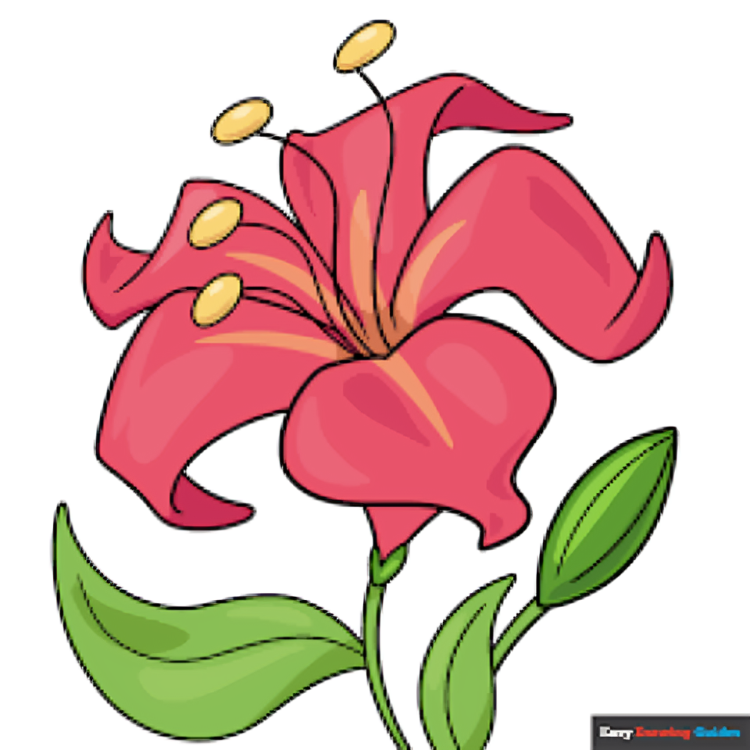Flowers have long been a symbol of beauty, love, and nature’s charm, inspiring artists of all levels to capture their delicate forms. Flower drawings, with their intricate details and vibrant expressions, are among the most beloved subjects in art. Whether you’re a beginner looking to explore the world of art or an experienced artist seeking inspiration, this guide will provide you with everything you need to create stunning flower drawings.
Why Draw Flowers?
Flower drawings are timeless and versatile. They can range from simple sketches to complex, hyper-realistic illustrations. Here are a few reasons why drawing flowers is so rewarding:
- Accessibility: Flowers are all around us, making them a readily available subject.
- Variety: With thousands of species, flowers offer endless shapes, sizes, and colors to explore.
- Skill Development: Drawing flowers can improve your skills in shading, texture, and composition.
- Relaxation: Many artists find the process of drawing flowers meditative and calming.
Tools You’ll Need
Before diving into flower drawings, gather the right tools to make your experience enjoyable and effective:
- Pencils: Start with a range of graphite pencils (e.g., HB, 2B, 4B) for different shading effects.
- Eraser: A kneaded eraser is excellent for lifting graphite gently.
- Paper: Choose smooth sketching paper for pencil work or textured paper for a more artistic effect.
- Pens: Fine liners and gel pens are great for adding details and outlines.
- Colored Pencils/Watercolors: Add color to your flower drawings with quality colored pencils or watercolors.
Types of Flower Drawings
1. Realistic Flower Drawings
These drawings focus on capturing the intricate details of a flower, including its petals, veins, and textures. Realistic flower drawings require careful observation and patience but are highly rewarding.
2. Abstract Flower Art
Abstract flower drawings let your imagination run wild. Instead of sticking to realistic details, you can experiment with shapes, patterns, and colors to create a unique piece of art.
3. Botanical Illustrations
These are scientific representations of flowers, often used in educational materials. Botanical drawings require precision and an understanding of the flower’s anatomy.
4. Simple Flower Sketches
Perfect for beginners, simple sketches involve drawing basic flower shapes and forms without diving into intricate details.
5. Doodles and Patterns
Floral doodles are fun and easy to create. They can be used in journals, greeting cards, or as part of larger designs.
Step-by-Step Guide to Drawing a Flower
Follow these steps to draw a simple yet beautiful flower:
Step 1: Choose Your Flower
Select a flower that inspires you. Popular options include roses, daisies, sunflowers, and tulips.
Step 2: Start with Basic Shapes
Lightly sketch the flower’s basic structure using circles, ovals, and lines. For example, draw a circle for the center of a daisy and ovals for its petals.
Step 3: Outline the Petals
Using the basic shapes as a guide, outline the petals. Focus on their unique shapes and overlapping patterns.
Step 4: Add Details
Draw the veins on the petals, the texture of the stem, and any other distinctive features of your chosen flower.
Step 5: Shade and Highlight
Add depth to your drawing with shading. Identify the light source and create shadows and highlights accordingly.
Step 6: Add Color (Optional)
If desired, use colored pencils or watercolors to bring your flower to life. Pay attention to color gradients and natural tones.
Common Mistakes and How to Avoid Them
- Overworking the Drawing: Avoid adding too many details, which can make the drawing look cluttered.
- Ignoring Proportions: Study the flower’s proportions carefully before starting.
- Using Harsh Lines Too Early: Begin with light lines that are easy to erase or adjust.
- Skipping Practice: Like any skill, drawing flowers improves with regular practice.
Inspiration: Popular Flowers to Draw
- Roses: Known for their layered petals and romantic appeal, roses are a favorite among artists.
- Sunflowers: Their large petals and vibrant centers make sunflowers a cheerful subject.
- Tulips: Simple yet elegant, tulips are perfect for beginners.
- Lotus: A symbol of purity and beauty, lotus flowers offer unique shapes and patterns.
- Cherry Blossoms: These delicate flowers are ideal for soft, watercolor-style drawings.
Advanced Techniques for Flower Drawing
Once you’ve mastered the basics, try these advanced techniques:
- Focus on Textures: Study how light interacts with different parts of the flower, such as the smoothness of petals versus the roughness of the stem.
- Layering Colors: Use multiple layers of colored pencils or watercolors to achieve realistic hues.
- Perspective Drawing: Experiment with drawing flowers from different angles, such as a top-down view or a side profile.
- Incorporate Backgrounds: Add leaves, stems, or even a garden setting to create a complete composition.
Digital Flower Drawing
If traditional methods aren’t your style, explore digital flower drawing using tools like Procreate, Photoshop, or Adobe Fresco. These programs allow you to experiment with brushes, layers, and colors in a flexible environment.
Benefits of Flower Drawing
Drawing flowers isn’t just about creating art—it offers numerous personal and creative benefits:
- Stress Relief: The repetitive patterns in flower drawing can have a calming effect.
- Improved Observation Skills: Studying flowers closely enhances your attention to detail.
- Creative Expression: You can experiment with different styles and techniques.
Conclusion
Flower drawings are a beautiful and rewarding way to explore the world of art. Whether you’re sketching a simple daisy or creating a detailed botanical illustration, the possibilities are endless. With practice, patience, and a dash of creativity, you can master the art of floral drawings and create works that capture the beauty of nature.
So, grab your pencils and paper, and start your journey into the enchanting world of flower drawings today!

